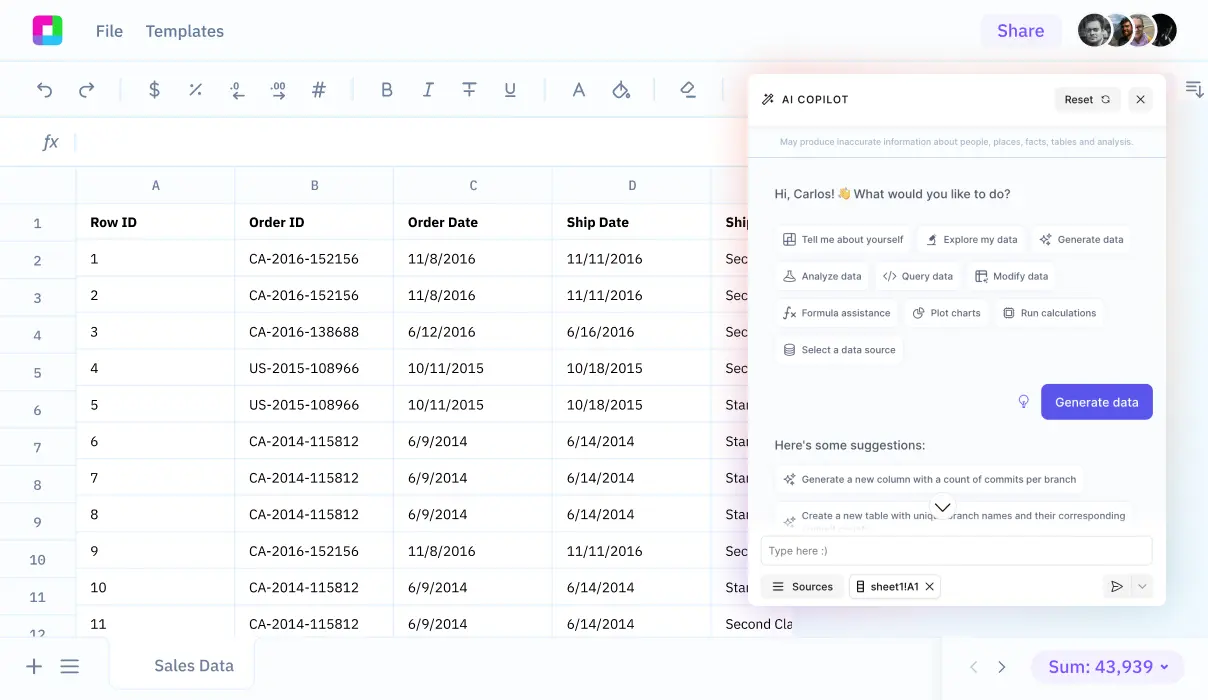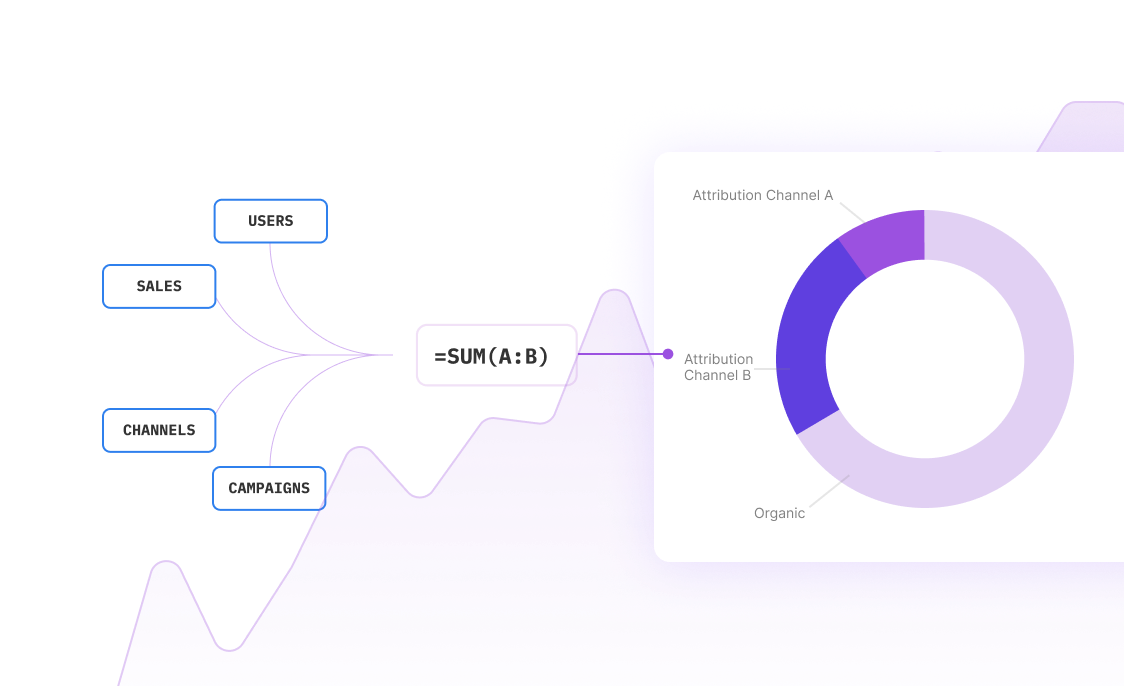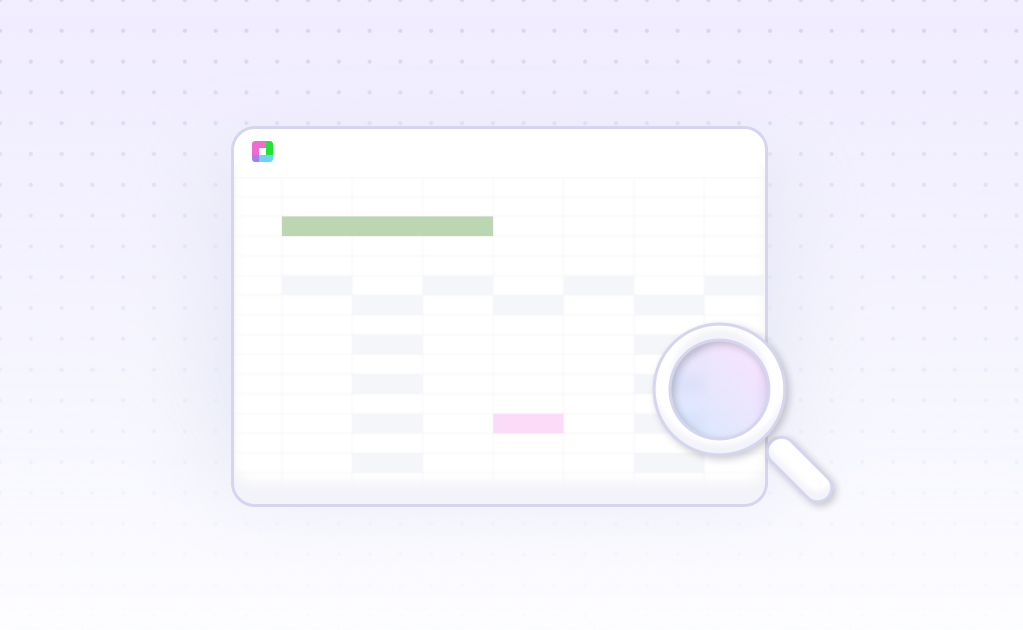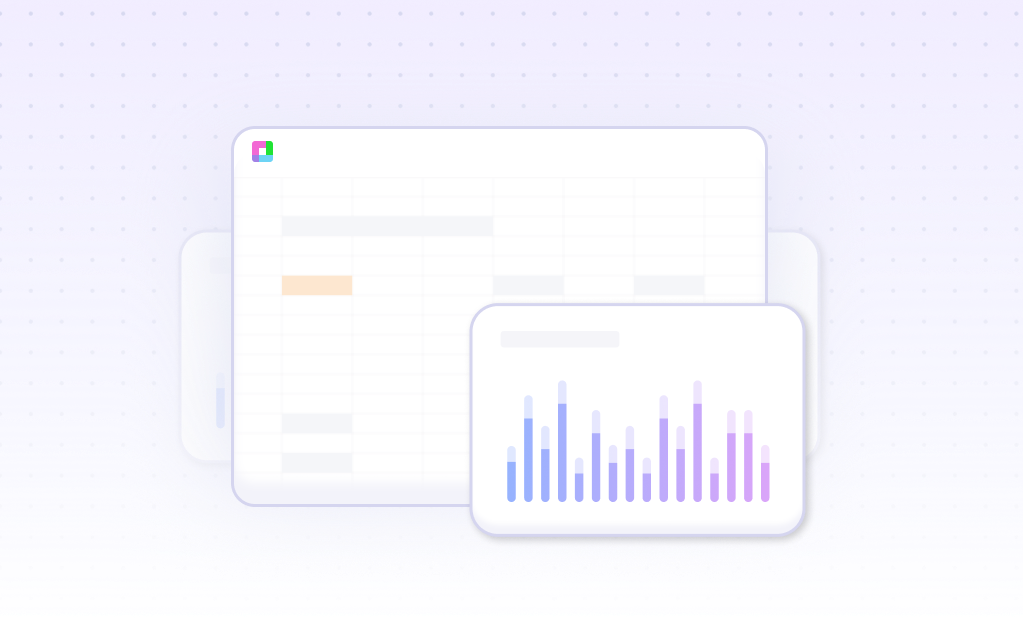
Introduction
Budget variance analysis is essential for corporate performance management, helping businesses track differences between planned and actual financial outcomes. While Excel remains the primary tool for financial modeling and reporting, its formulas and worksheets can be complex to manage. Businesses traditionally create separate tabs for different sections, use menu sheets for context, and implement various formulas for analysis.
Modern AI tools offer a more efficient approach to variance analysis. Sourcetable combines Excel-like functionality with AI-driven automation, generating complex formulas like SUM and VLOOKUP automatically. It streamlines data cleaning, creates interactive charts, and integrates with SQL and Python for advanced analysis. The platform connects with over 100 systems, including Quickbooks, Shopify, and Hubspot.
Learn how to perform sophisticated financial variance analysis with Sourcetable's AI-powered tools at sourcetable.com/signup.
Why Sourcetable Is Best for Financial Variance Analysis
Sourcetable delivers robust financial variance analysis capabilities with powerful trend identification features. Like Excel, it provides essential spreadsheet analytics, comprehensive audit trails, and data visualization through charts. The key advantage is its multi-user collaboration functionality, which streamlines team-based financial analysis.
While Excel's AI tools like Ideas and Forecast Sheet offer automated trend detection and future projections, Sourcetable provides comparable analytical features in a more collaborative environment. Both platforms support variance analysis workflows, but Sourcetable's Excel-like interface makes it immediately familiar to financial analysts while enabling seamless team cooperation.
Benefits of Financial Variance Analysis with AI-Powered Spreadsheets
Financial variance analysis provides critical insights into business operations, enabling improved planning and control. This analytical approach helps identify areas for improvement, set realistic expectations, monitor success, and assign responsibility for outcomes.
Why Choose Sourcetable Over Excel
While Excel serves over a billion users, Sourcetable's AI-powered capabilities deliver superior efficiency for financial analysis. The platform integrates seamlessly with Excel and Google Sheets while making spreadsheet functions faster and more accessible through natural language processing.
Sourcetable accelerates financial variance analysis through automated data entry, complex calculations, and instant visualization. Its AI-powered chatbot simplifies formula creation, data cleaning, and chart generation, reducing the time required for detailed financial analysis.
Enhanced Accuracy and Automation
Sourcetable's AI capabilities automate data validation and cleansing, ensuring higher data integrity than traditional Excel analysis. The platform excels at analyzing historical data for accurate forecasting and automatically generates professional visualizations for clearer insights into variance patterns.
Financial Variance Analysis Examples with Sourcetable
Sourcetable's AI-powered tools enable comprehensive variance analysis across multiple financial metrics. The platform automates data cleaning, report generation, and complex scenario analysis to uncover actionable insights faster than traditional spreadsheets.
Sales Variance Analysis
Track regional sales performance disparities, such as a 12% revenue increase in North America alongside a 20% decline in European markets. AI-driven forecasting tools help adjust projections based on quarterly performance data.
Cost and Resource Variance
Monitor material usage efficiency and labor cost variations through automated data categorization. The platform's trend analysis capabilities identify operational inefficiencies in both variable and fixed cost structures.
Profit Variance Tracking
Compare actual versus projected profit margins with automated reporting features. The system analyzes large datasets to identify performance gaps, such as an 8% shortfall in revenue targets, enabling quick strategic adjustments.
Overhead Variance Assessment
Evaluate fixed cost variations through AI-powered data analysis. The platform's forecasting capabilities help optimize resource allocation and improve budget accuracy for substantial overhead expenses.
Use Cases for Financial Variance Analysis with Sourcetable
Automated Data Cleaning and Analysis |
Sourcetable's AI capabilities automatically clean and categorize financial data, eliminating manual data preparation time and reducing errors in variance calculations like |
Strategic Decision Support |
The AI-powered platform generates deep insights from variance analysis, enabling finance teams to focus on strategic decision-making rather than data processing. |
Proactive Variance Detection |
Sourcetable's AI algorithms identify and explain significant variances automatically, removing guesswork from the analysis process and accelerating response times to financial discrepancies. |
Enhanced Forecasting Accuracy |
The platform analyzes historical variance patterns to improve forecasting accuracy and optimize future budget predictions, reducing the gap between projected and actual results. |
Automated Variance Reporting |
Sourcetable generates comprehensive variance reports automatically, streamlining the reporting process and ensuring consistent analysis across financial periods. |
Frequently Asked Questions
What is financial variance analysis and why is it important?
Financial variance analysis compares actual financial performance to budgeted financial performance, analyzing revenue, cost, and volume variances. It helps organizations evaluate how well they meet financial goals, make informed investment decisions, and identify areas needing corrective action. It also enhances control over business operations and helps create more accurate budgets.
What are the main types of variances analyzed in financial variance analysis?
The three main types of variances analyzed are revenue variances (differences between actual and budgeted revenues), cost variances (differences between actual and budgeted costs), and volume variances (differences in production volumes or usage rates).
How does AI-powered variance analysis in spreadsheets improve the analysis process?
AI-powered variance analysis automates data ingestion, analyzes patterns, detects anomalies, and streamlines reporting with natural language insights. It uncovers hidden patterns and root causes while enabling precise corrective actions through real-time insights, increasing accuracy, speed, and control over data and reporting.
Conclusion
Budget variance analysis in Excel requires careful organization with separate tabs for each section and a menu sheet for context. While Excel formulas enable traditional variance calculations, modern AI tools like Sourcetable offer a more efficient approach. Sourcetable automates formula generation, creates interactive charts, and provides advanced data analysis through SQL and Python integration.
Sourcetable's AI capabilities transform variance analysis by automating data cleaning, generating complex formulas like SUM and VLOOKUP, and offering voice-driven data interaction. With integrations across over 100 platforms, Sourcetable streamlines the entire variance analysis workflow. Experience AI-powered financial variance analysis by signing up at sourcetable.com/signup.
Recommended Analysis Guides
Connect your most-used data sources and tools to Sourcetable for seamless analysis.
Frequently Asked Questions
If you question is not covered here, you can contact our team.
Contact Us





